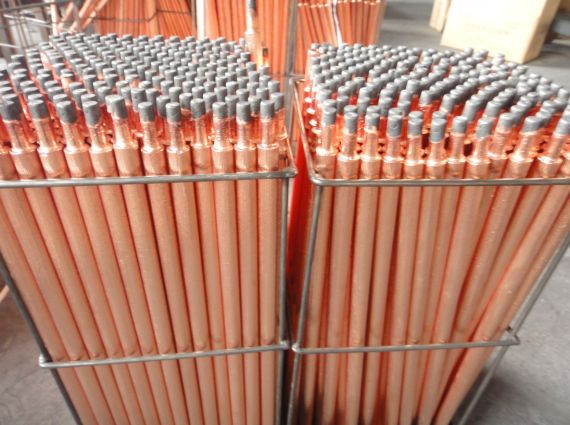What is the effect of carbon rod density and porosity on gouging efficiency and carbon rod loss?
The density and porosity of carbon rods have an important influence on gouging efficiency and carbon rod loss, as follows:
Influence on gouging efficiency
Density: Generally speaking, when the density of carbon rods is higher, their structure is denser and their strength is greater. During the gouging process, they can withstand greater impact force of compressed air and arc heat, and are not prone to deformation or breakage, so that they can maintain a stable arc and make the gouging process smoother. This is conducive to improving the speed and quality of gouging, thereby improving the gouging efficiency. For example, when high-density carbon rods are gouging thick plates, they can work continuously and stably, and the grooves gouged are smooth and neat, reducing the pause and trimming time caused by the instability of carbon rods.
Porosity: If the porosity of carbon rods is too high, it will cause the compressed air to blow away the debris during the gouging process, making the arc unstable and affecting the gouging efficiency. In addition, carbon rods with high porosity are prone to oxidation at high temperatures, which reduces the service life of the carbon rods and also affects the gouging effect. On the contrary, carbon rods with low porosity have relatively poor gas permeability, but can better maintain the stability of the arc during gouging, which helps to improve the gouging efficiency. However, if the porosity is too low, the gas inside the carbon rod cannot be discharged in time, which may cause defects such as pores during the gouging process, and will also have a certain negative impact on the gouging efficiency.
Impact on carbon rod loss
Density: High-density carbon rods have a strong ability to resist arc erosion and mechanical wear during the gouging process due to their dense structure. The high temperature generated by the arc and the scouring of compressed air have relatively little damage to their surface, so the carbon rods lose slowly. For example, in long-term gouging operations, the consumption rate of high-density carbon rods is significantly lower than that of low-density carbon rods, which can reduce the number of carbon rod replacements and reduce production costs.
Porosity: Carbon rods with larger porosity have larger specific surface areas, and have a large contact area with high-temperature arcs and oxidizing gases during the gouging process, which is prone to oxidation reactions, resulting in faster carbon rod loss. At the same time, the gas in the pores expands at high temperatures, which may cause stress inside the carbon rod, accelerating the rupture and loss of the carbon rod. Carbon rods with smaller porosity, however, have a relatively small contact area with external substances, so the oxidation and loss rates are relatively slow. However, if the porosity is too low, the heat generated by the carbon rod during the gouging process is not easy to dissipate, and the loss may increase due to overheating.
In summary, the density and porosity of the carbon rod have a significant impact on the gouging efficiency and carbon rod loss. In practical applications, it is necessary to select carbon rods with appropriate density and porosity according to the specific gouging process requirements and working conditions to achieve the best gouging effect and the lowest carbon rod loss.

Contact: admin
Phone: +86-13665233012
E-mail: service@weldmaterial.com
Add: Huanghua Industrial park, Jiangdu City, Yangzhou , Jiangsu Provicne, China.